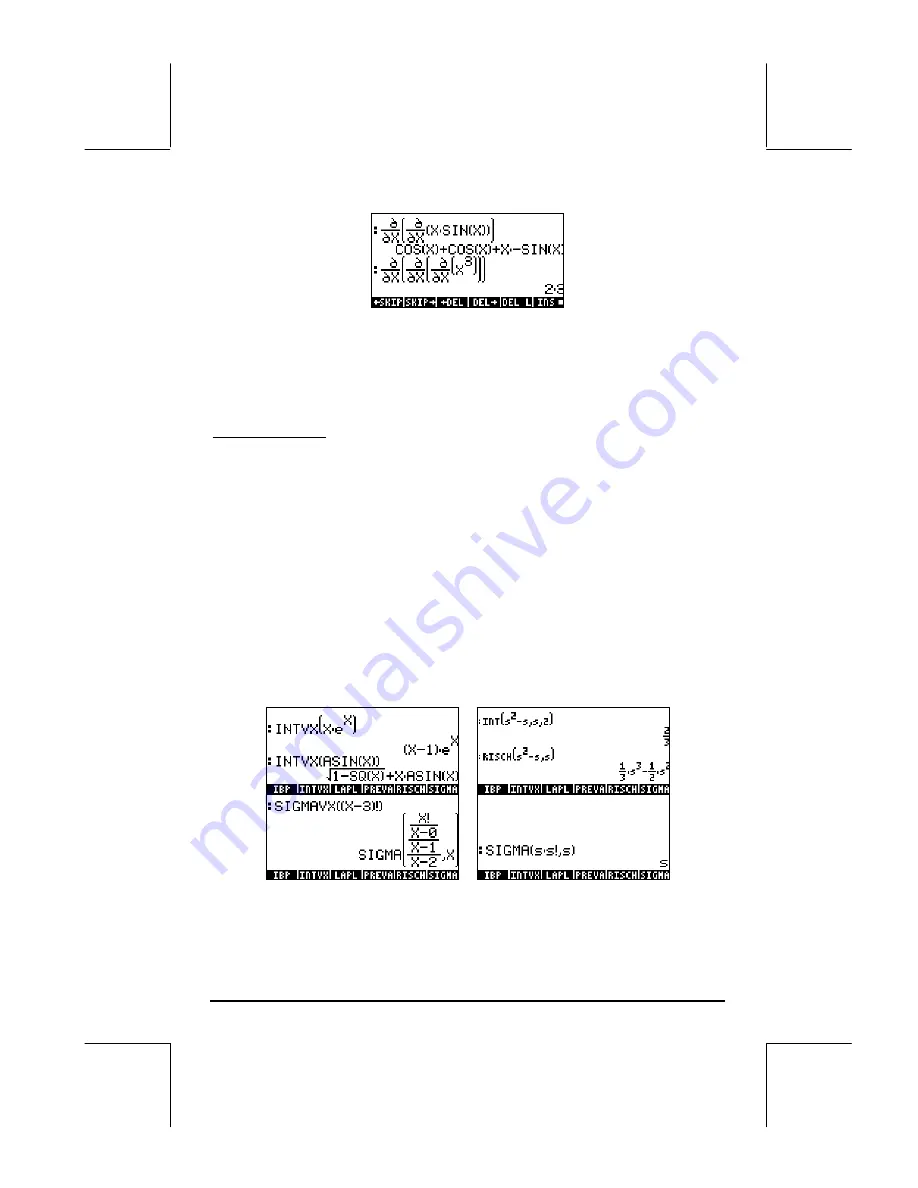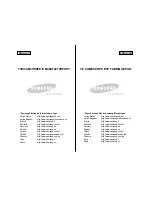
Page 13-14
Anti-derivatives and integrals
An anti-derivative of a function f(x) is a function F(x) such that f(x) = dF/dx.
For example, since d(x
3
) /dx = 3x
2
, an anti-derivative of f(x) = 3x
2
is F(x) = x
3
+ C, where C is a constant. One way to represent an anti-derivative is as a
indefinite integral, i.e.,
C
x
F
dx
x
f
+
=
∫
)
(
)
(
, if and only if, f(x) = dF/dx,
and C = constant.
Functions INT, INTVX, RISCH, SIGMA and SIGMAVX
The calculator provides functions INT, INTVX, RISCH, SIGMA and SIGMAVX
to calculate anti-derivatives of functions. Functions INT, RISCH, and SIGMA
work with functions of any variable, while functions INTVX, and SIGMAVX
utilize functions of the CAS variable VX (typically, ‘x’). Functions INT and
RISCH require, therefore, not only the expression for the function being
integrated, but also the independent variable name. Function INT, requires
also a value of x where the anti-derivative will be evaluated. Functions INTVX
and SIGMAVX require only the expression of the function to integrate in terms
of VX. Some examples are shown next in ALG mode:












































